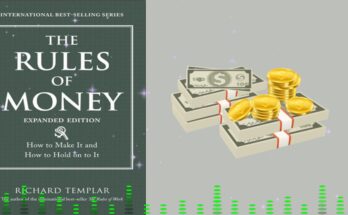90 Days Trading Psychology – Summary & Key Insights
Trading success is often attributed to strategies, indicators, and technical analysis. Yet ask any consistently profitable trader and they’ll tell you: psychology matters more than any chart pattern. In 90 Days Trading Psychology, Steven Hart distills the emotional, mental, and behavioral principles that separate disciplined traders from those caught in cycles of fear and greed. The book lays out a structured 90-day approach to rewiring your mindset, reinforcing positive habits, and creating a durable mental framework for long-term market survival.
1. Why Mindset Trumps Strategy
Hart argues that a trading plan is only as strong as the mind executing it. Two traders with the same rules can achieve wildly different results depending on discipline, patience, and emotional control. Markets will always present uncertainty; how you interpret and react to that uncertainty dictates your equity curve. The 90-day structure provides accountability, forcing traders to confront psychological biases in real time.
2. Daily Reflection & Awareness
Each day’s exercise focuses on self-observation: noticing stress triggers, fear spikes, and the subtle influence of greed. Hart encourages journaling—not just trade entries and exits, but also thoughts, impulses, and emotional swings. Over weeks, patterns emerge: hesitation after a loss, overtrading after a win, revenge trades driven by frustration. Awareness is the first step toward change.
3. Building Emotional Discipline
Hart emphasizes rule-based consistency over gut feelings. The 90-day framework trains traders to follow pre-defined setups, size positions appropriately, and accept losses without spiraling. This process rewires the brain to treat trading like a professional endeavor, not a casino. Success becomes measured by adherence to process rather than the outcome of any single trade.
4. Overcoming Fear & Greed
Fear manifests as hesitation or premature exits; greed shows up as chasing moves or adding risk impulsively. Hart’s approach breaks these cycles by anchoring decisions to objective criteria—plan, checklist, and risk limits. By practicing detachment, traders learn to see losses as statistical inevitabilities, not personal failures, and wins as data points, not validation of genius.
5. Creating Habits That Stick
The power of 90 days lies in habit formation. Hart integrates mindfulness, routine building, and structured review so that emotional discipline becomes second nature. Repetition under real market conditions for three months conditions the mind to operate calmly amid volatility. Just as athletes drill fundamentals, traders drill patience, risk control, and focus.
6. Long-Term Perspective
Hart warns against the “get rich quick” mentality. Short-term obsession leads to burnout and impulsive errors. By extending focus to months and years, traders reduce the psychological weight of each decision. Equity growth becomes a marathon, not a sprint, allowing for natural variance without emotional whiplash.
7. Practical Tools & Exercises
The book includes guided prompts, daily affirmations, and routine checklists designed to keep traders anchored. These tools encourage objective self-analysis, pushing you to answer: Did I follow my plan? Was my risk appropriate? What emotion surfaced today? Over 90 days, this disciplined introspection transforms raw experience into actionable wisdom.
Conclusion
90 Days Trading Psychology is less about specific chart setups and more about cultivating mental resilience. Steven Hart shows that mastering yourself is the surest path to mastering the markets. By committing to structured reflection, disciplined execution, and an infinite-game mindset, traders gain the clarity, patience, and confidence needed to thrive—long after the initial 90 days. Whether you’re new to trading or refining your edge, Hart’s framework acts as a personal coach, rewiring destructive patterns and replacing them with professional, process-driven behavior.


